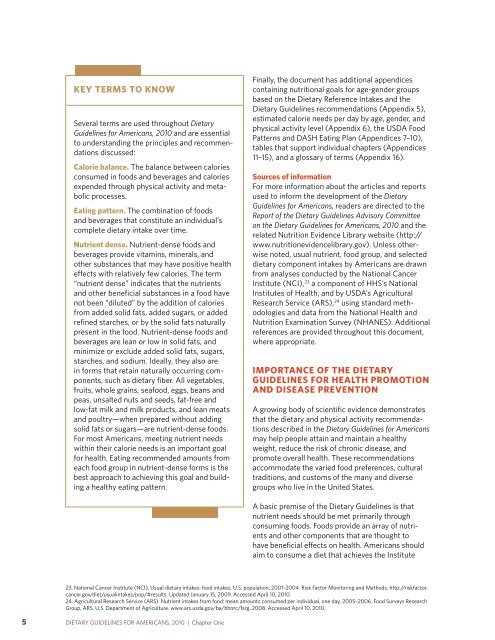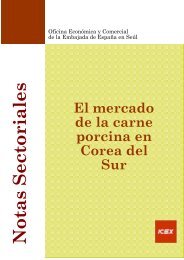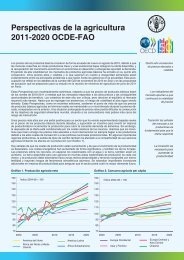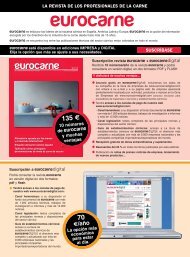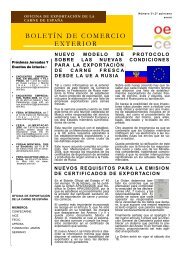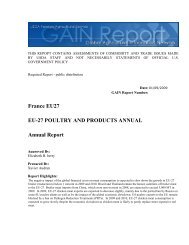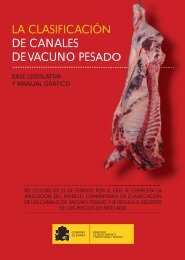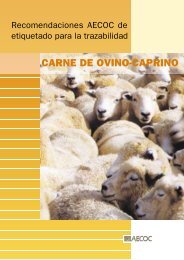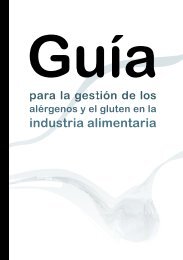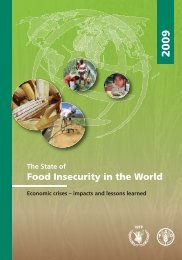Dietary Guidelines for Americans - SchoolNutritionAndFitness.com
Dietary Guidelines for Americans - SchoolNutritionAndFitness.com
Dietary Guidelines for Americans - SchoolNutritionAndFitness.com
- No tags were found...
You also want an ePaper? Increase the reach of your titles
YUMPU automatically turns print PDFs into web optimized ePapers that Google loves.
key terMs to know Several terms are used throughout <strong>Dietary</strong><strong>Guidelines</strong> <strong>for</strong> <strong>Americans</strong>, 2010 and are essentialto understanding the principles and re<strong>com</strong>mendationsdiscussed:calorie balance. The balance between caloriesconsumed in foods and beverages and caloriesexpended through physical activity and metabolicprocesses.eating pattern. The <strong>com</strong>bination of foodsand beverages that constitute an individual’s<strong>com</strong>plete dietary intake over time.nutrient dense. Nutrient-dense foods andbeverages provide vitamins, minerals, andother substances that may have positive healtheffects with relatively few calories. The term“nutrient dense” indicates that the nutrientsand other beneficial substances in a food havenot been “diluted” by the addition of caloriesfrom added solid fats, added sugars, or addedrefined starches, or by the solid fats naturallypresent in the food. Nutrient-dense foods andbeverages are lean or low in solid fats, andminimize or exclude added solid fats, sugars,starches, and sodium. Ideally, they also arein <strong>for</strong>ms that retain naturally occurring <strong>com</strong>ponents,such as dietary fiber. All vegetables,fruits, whole grains, seafood, eggs, beans andpeas, unsalted nuts and seeds, fat-free andlow-fat milk and milk products, and lean meatsand poultry—when prepared without addingsolid fats or sugars—are nutrient-dense foods.For most <strong>Americans</strong>, meeting nutrient needswithin their calorie needs is an important goal<strong>for</strong> health. Eating re<strong>com</strong>mended amounts fromeach food group in nutrient-dense <strong>for</strong>ms is thebest approach to achieving this goal and buildinga healthy eating pattern.Finally, the document has additional appendicescontaining nutritional goals <strong>for</strong> age-gender groupsbased on the <strong>Dietary</strong> Reference Intakes and the<strong>Dietary</strong> <strong>Guidelines</strong> re<strong>com</strong>mendations (Appendix 5),estimated calorie needs per day by age, gender, andphysical activity level (Appendix 6), the USDA FoodPatterns and DASH Eating Plan (Appendices 7–10),tables that support individual chapters (Appendices11–15), and a glossary of terms (Appendix 16).sources of in<strong>for</strong>mationFor more in<strong>for</strong>mation about the articles and reportsused to in<strong>for</strong>m the development of the <strong>Dietary</strong><strong>Guidelines</strong> <strong>for</strong> <strong>Americans</strong>, readers are directed to theReport of the <strong>Dietary</strong> <strong>Guidelines</strong> Advisory Committeeon the <strong>Dietary</strong> <strong>Guidelines</strong> <strong>for</strong> <strong>Americans</strong>, 2010 and therelated Nutrition Evidence Library website (http://www.nutritionevidencelibrary.gov). Unless otherwisenoted, usual nutrient, food group, and selecteddietary <strong>com</strong>ponent intakes by <strong>Americans</strong> are drawnfrom analyses conducted by the National CancerInstitute (NCI), 23 a <strong>com</strong>ponent of HHS’s NationalInstitutes of Health, and by USDA’s AgriculturalResearch Service (ARS), 24 using standard methodologiesand data from the National Health andNutrition Examination Survey (NHANES). Additionalreferences are provided throughout this document,where appropriate.iMPortance of the dietaryguidelines <strong>for</strong> health ProMotionand disease PreventionA growing body of scientific evidence demonstratesthat the dietary and physical activity re<strong>com</strong>mendationsdescribed in the <strong>Dietary</strong> <strong>Guidelines</strong> <strong>for</strong> <strong>Americans</strong>may help people attain and maintain a healthyweight, reduce the risk of chronic disease, andpromote overall health. These re<strong>com</strong>mendationsac<strong>com</strong>modate the varied food preferences, culturaltraditions, and customs of the many and diversegroups who live in the United States.A basic premise of the <strong>Dietary</strong> <strong>Guidelines</strong> is thatnutrient needs should be met primarily throughconsuming foods. Foods provide an array of nutrientsand other <strong>com</strong>ponents that are thought tohave beneficial effects on health. <strong>Americans</strong> shouldaim to consume a diet that achieves the Institute23. National Cancer Institute (NCI). Usual dietary intakes: food intakes, U.S. population, 2001–2004. Risk Factor Monitoring and Methods. http://riskfactor.cancer.gov/diet/usualintakes/pop/#results. Updated January 15, 2009. Accessed April 10, 2010.24. Agricultural Research Service (ARS). Nutrient intakes from food: mean amounts consumed per individual, one day, 2005–2006. Food Surveys ResearchGroup, ARS, U.S. Department of Agriculture. www.ars.usda.gov/ba/bhnrc/fsrg. 2008. Accessed April 10, 2010.5DIETARY GUIDELINES FOR AMERICANS, 2010 | Chapter One


